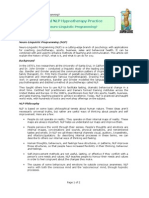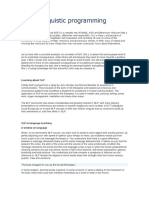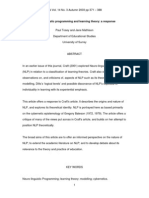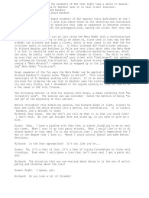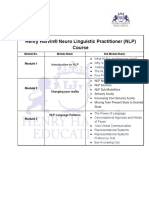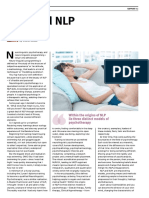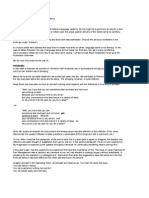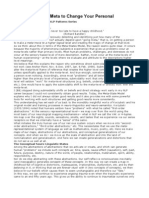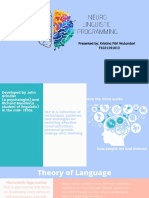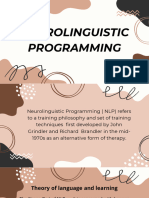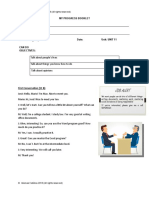0% found this document useful (0 votes)
187 views10 pagesNLP in Language Learning
NLP refers to a training philosophy and set of techniques developed in the 1970s as an alternative form of therapy. It focuses on building rapport, gathering information about internal and external views, and helping achieve goals. NLP is based on theories of how the brain and language work. It views learning as moving from controlled to automatic processing. Four key principles are outcomes, rapport, sensory acuity, and flexibility. NLP uses imaginative exercises to link feelings to grammatical structures but is not a language teaching method in itself.
Uploaded by
Khalfi SyaputraCopyright
© © All Rights Reserved
We take content rights seriously. If you suspect this is your content, claim it here.
Available Formats
Download as PPTX, PDF, TXT or read online on Scribd
0% found this document useful (0 votes)
187 views10 pagesNLP in Language Learning
NLP refers to a training philosophy and set of techniques developed in the 1970s as an alternative form of therapy. It focuses on building rapport, gathering information about internal and external views, and helping achieve goals. NLP is based on theories of how the brain and language work. It views learning as moving from controlled to automatic processing. Four key principles are outcomes, rapport, sensory acuity, and flexibility. NLP uses imaginative exercises to link feelings to grammatical structures but is not a language teaching method in itself.
Uploaded by
Khalfi SyaputraCopyright
© © All Rights Reserved
We take content rights seriously. If you suspect this is your content, claim it here.
Available Formats
Download as PPTX, PDF, TXT or read online on Scribd
/ 10

